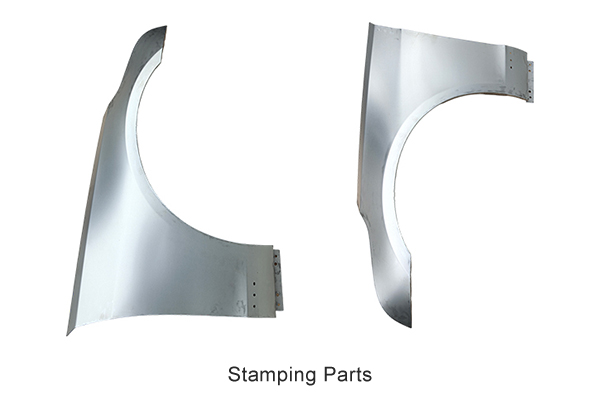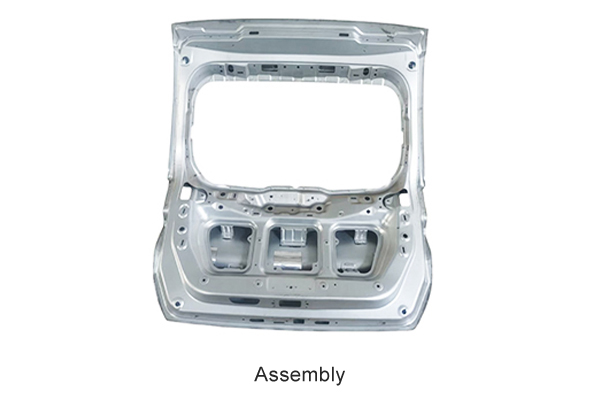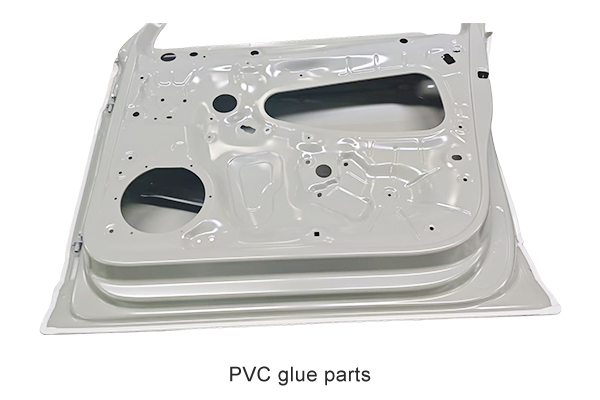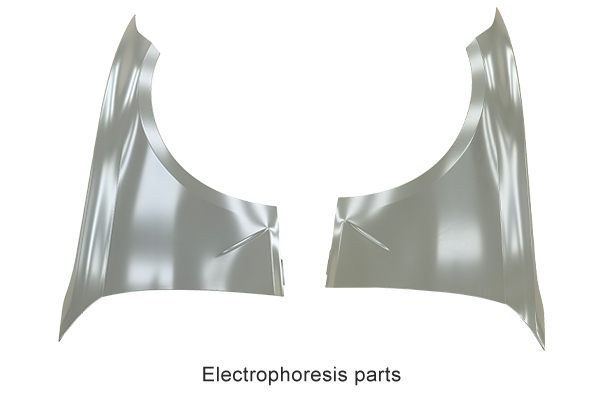How does the electrophoresis services phosphating process achieve zero-blind-angle corrosion protection for the interior cavities and welds of automotive parts?
Release Time : 2025-10-28
In modern automotive manufacturing, corrosion resistance is a key indicator of component durability and overall vehicle quality. Vehicles are exposed to complex environments such as moisture, salt spray, and temperature fluctuations for long periods of time. Hidden areas within the vehicle body structure, such as interior cavities, welds, hems, and bolt holes, are particularly susceptible to corrosion. Traditional spray or brush coating processes struggle to penetrate these complex structures, resulting in blind spots. The electrophoresis services phosphating process, leveraging its unique electrochemical principles and wetting properties, successfully achieves zero-blind-angle corrosion protection for automotive parts, becoming a core technology in the automotive industry's anti-corrosion system.
1. Phosphating Process: Building the "First Line of Defense" Against Corrosion
Before electrophoretic coating, automotive parts must undergo rigorous pre-treatment, of which phosphating is a crucial step. Phosphating involves immersing the metal workpiece in a chemical solution containing phosphates. Through a chemical reaction, a water-insoluble, crystalline phosphate conversion film forms on the surface. Although thin, this film performs multiple functions: First, it significantly increases the roughness and activity of the metal surface, providing an ideal "anchoring base" for subsequent electrophoretic coating and enhancing adhesion. Second, the phosphate coating itself possesses certain corrosion resistance and insulation properties, slowing the progression of electrochemical corrosion. More importantly, it evenly covers every corner of the workpiece, including internal cavities and welds that are difficult to see with the naked eye, providing a consistent reaction surface for subsequent electrophoresis.
2. Electrophoretic Coating: Achieving Uniform Coverage "From the Inside Out"
Electrophoretic coating involves immersing the phosphate-treated workpiece as an electrode in the electrophoretic bath. Under the influence of an applied DC electric field, charged paint particles migrate and deposit on the workpiece surface, forming a uniform, dense film. The greatest advantage of this process lies in its excellent penetration, meaning that the paint can penetrate deep into the workpiece's enclosed cavities and crevices, achieving comprehensive "inside-out" coverage. When the workpiece is immersed in the electrophoretic bath, the electric field acts not only on the external surface but also penetrates the liquid into the internal cavities. Driven by the electric field, charged paint particles follow the field lines into the cavity and deposit onto the inner wall, forming a film. Even for complex box-shaped structures, multi-layered hems, or dense welds, the electrophoretic paint can penetrate through tiny gaps, forming a continuous protective layer. This dual effect of "wetting + electrophoresis" completely solves the problem of traditional spray coatings that lack visibility due to "line-of-sight" limitations.
3. Synergy: The Perfect Combination of Phosphating and Electrophoresis
The presence of the phosphate film significantly enhances the electrophoretic coating's throwing power and adhesion. The uniform phosphate crystals provide ideal nucleation sites for the electrophoretic paint, ensuring strong adhesion within the cavity and welds, preventing blistering and flaking. Furthermore, the insulating properties of the phosphate film help evenly distribute the electric field across the workpiece surface, preventing current concentration and ensuring consistent film thickness. This synergistic mechanism of "phosphating primer and electrophoretic film formation" ensures a highly complete anti-corrosion system even at the microscopic level.
4. Wide Application and Long-Term Protection
This process is widely used in key automotive components, including chassis, body structures, frames, fuel tanks, and battery trays. After curing, the electrophoretic coating forms a hard, dense protective film. Combined with the phosphate layer, it effectively blocks the intrusion of moisture, oxygen, and corrosive media, extending the service life of components by over 10 years.
In summary, the electrophoresis services phosphating process is not an isolated step; rather, it works closely with the electrophoretic coating process to form a complete corrosion protection system. Through the dual effects of chemical conversion and electrochemical deposition, it achieves zero-blind-angle protection for hidden areas such as the interior cavities and welds of automotive components, providing a solid guarantee for the long-term durability and safety of the vehicle.
1. Phosphating Process: Building the "First Line of Defense" Against Corrosion
Before electrophoretic coating, automotive parts must undergo rigorous pre-treatment, of which phosphating is a crucial step. Phosphating involves immersing the metal workpiece in a chemical solution containing phosphates. Through a chemical reaction, a water-insoluble, crystalline phosphate conversion film forms on the surface. Although thin, this film performs multiple functions: First, it significantly increases the roughness and activity of the metal surface, providing an ideal "anchoring base" for subsequent electrophoretic coating and enhancing adhesion. Second, the phosphate coating itself possesses certain corrosion resistance and insulation properties, slowing the progression of electrochemical corrosion. More importantly, it evenly covers every corner of the workpiece, including internal cavities and welds that are difficult to see with the naked eye, providing a consistent reaction surface for subsequent electrophoresis.
2. Electrophoretic Coating: Achieving Uniform Coverage "From the Inside Out"
Electrophoretic coating involves immersing the phosphate-treated workpiece as an electrode in the electrophoretic bath. Under the influence of an applied DC electric field, charged paint particles migrate and deposit on the workpiece surface, forming a uniform, dense film. The greatest advantage of this process lies in its excellent penetration, meaning that the paint can penetrate deep into the workpiece's enclosed cavities and crevices, achieving comprehensive "inside-out" coverage. When the workpiece is immersed in the electrophoretic bath, the electric field acts not only on the external surface but also penetrates the liquid into the internal cavities. Driven by the electric field, charged paint particles follow the field lines into the cavity and deposit onto the inner wall, forming a film. Even for complex box-shaped structures, multi-layered hems, or dense welds, the electrophoretic paint can penetrate through tiny gaps, forming a continuous protective layer. This dual effect of "wetting + electrophoresis" completely solves the problem of traditional spray coatings that lack visibility due to "line-of-sight" limitations.
3. Synergy: The Perfect Combination of Phosphating and Electrophoresis
The presence of the phosphate film significantly enhances the electrophoretic coating's throwing power and adhesion. The uniform phosphate crystals provide ideal nucleation sites for the electrophoretic paint, ensuring strong adhesion within the cavity and welds, preventing blistering and flaking. Furthermore, the insulating properties of the phosphate film help evenly distribute the electric field across the workpiece surface, preventing current concentration and ensuring consistent film thickness. This synergistic mechanism of "phosphating primer and electrophoretic film formation" ensures a highly complete anti-corrosion system even at the microscopic level.
4. Wide Application and Long-Term Protection
This process is widely used in key automotive components, including chassis, body structures, frames, fuel tanks, and battery trays. After curing, the electrophoretic coating forms a hard, dense protective film. Combined with the phosphate layer, it effectively blocks the intrusion of moisture, oxygen, and corrosive media, extending the service life of components by over 10 years.
In summary, the electrophoresis services phosphating process is not an isolated step; rather, it works closely with the electrophoretic coating process to form a complete corrosion protection system. Through the dual effects of chemical conversion and electrochemical deposition, it achieves zero-blind-angle protection for hidden areas such as the interior cavities and welds of automotive components, providing a solid guarantee for the long-term durability and safety of the vehicle.








